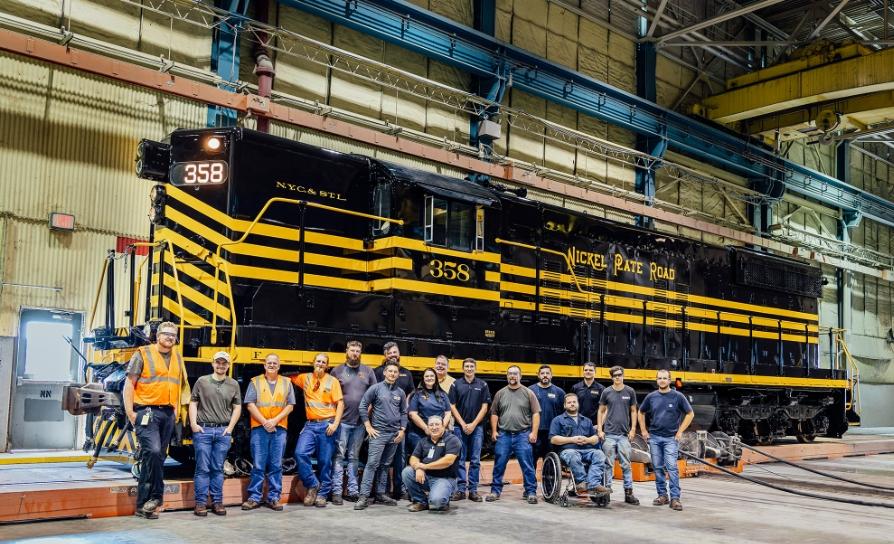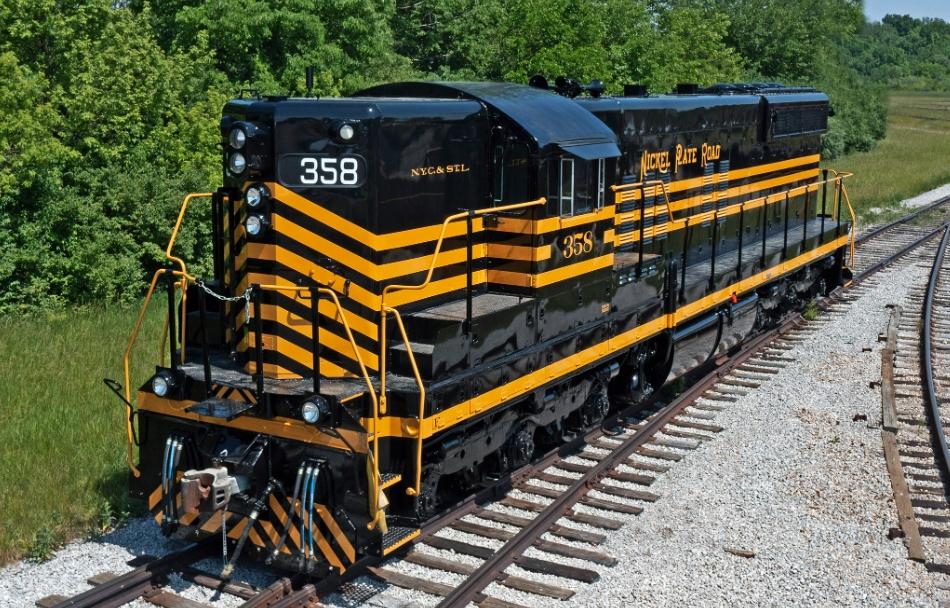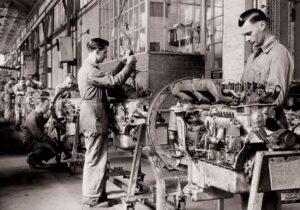The ongoing mechanical overhaul of Nickel Plate Road diesel locomotive no. 358 has reached an exciting milestone, thanks to Progress Rail’s efforts in restoring it to its original 1957 appearance. The dedicated work of volunteers and donors from the Fort Wayne Railroad Historical Society has spanned six years, and soon, this iconic locomotive from the 1950s will once again grace the rails.
In 2010, Norfolk Southern generously donated locomotive no. 358 to the Fort Wayne Railroad, marking the beginning of an extensive restoration process. Once fully restored, the locomotive will become a functioning rail attraction, enhancing the non-profit organization’s preservation endeavors and contributing to the growth of tourism events in the Northeast Indiana region.

W.D. Miller, the Project Manager, expressed his emotional journey of witnessing the remarkable transformation of the locomotive from a derelict state to a museum-quality showpiece. Throughout the overhaul process, Progress Rail’s unwavering support played a crucial role, ensuring the locomotive’s authentic restoration to its original Electro-Motive appearance, for which the team is deeply grateful. While the organization is renowned for operating a 1940s-era Nickel Plate steam locomotive, the restored diesel-electric engine will evoke memories for an entire generation of Americans who witnessed these enduring machines operating across the country.
In keeping with the tradition of EMD® locomotive manufacturing, Progress Rail upholds its legacy by maintaining an assembly plant in central Indiana. The skilled company employees meticulously consulted the original diagrams to ensure the locomotive’s faithful restoration to its original Nickel Plate Road livery.

Art Erbacher, senior vice president of Progress Rail, expressed admiration for the design, durability, and quality of EMD locomotives, noting that this project serves as a tribute to these exceptional machines. He added that supporting initiatives like this is one of the rewarding aspects of working in the rail industry.
“Participating in this project has lifted the spirits of our team,” said Jose Ruy Sanchez, locomotive operations director at Progress Rail in Muncie. “We eagerly anticipate the completion of the unit and take pride in being able to share with our family and friends that we were part of this restoration. At Progress Rail, we take great pride in being a part of an industry that brings people and communities together, and we eagerly look forward to encountering this locomotive in the future.”

No. 358 was among the twenty diesel locomotives built as replacements for the Nickel Plate Road’s steam engine fleet, including the iconic Nickel Plate Road Berkshire-type steam locomotive no. 765, which the Fort Wayne Railroad has owned, restored, and operated since the 1970s. These SD9-type locomotives, designated as “Special Duty,” played a significant role in phasing out steam power due to their lower maintenance costs. After serving Norfolk & Western and Norfolk Southern for many years, the 358 eventually retired from active duty. Thanks to the extensive restoration, it will be the sole operational Nickel Plate SD9 locomotive with its original appearance and the only one operating in rail tourism service.
Miller expressed that having operational examples of two vastly different locomotives from the same railroad company is a rarity. Together, these locomotives will play a crucial role in telling the story of railroad technology spanning the last 80 years.

The restoration of the 358 required more than 12,000 volunteer hours and received support from over $100,000 in financial and in-kind contributions. Notable supporters included Progress Rail and its employees, Steel Dynamics, Wheeling & Lake Erie Railway, Nickel Plate Railroad Historical & Technical Society, Mad River & NKP Railroad Museum, Illinois Railway Museum, Crown Battery, Horizon Rail, and several private individuals with locomotive expertise. Once the restoration work at Progress Rail is finished, the 358 will be transported to the Indiana Northeastern Railroad Company’s locomotive shop in Hudson, Indiana, for the final touches.
“We have some electrical work left, but we’re nearly 90% done. After the 358 is fully restored, tested, and broken in, our plan is to operate it as part of the Indiana Rail Experience, featuring passenger excursions, commemorative events, and guest engineer programs,” shared Miller. “Our youngest volunteers have grown up learning to work on the 358, and now a new generation will get their first taste of railroading, all thanks to the 358 and the incredible support of our backers.”




